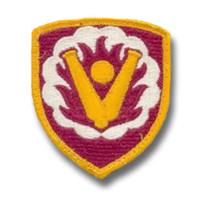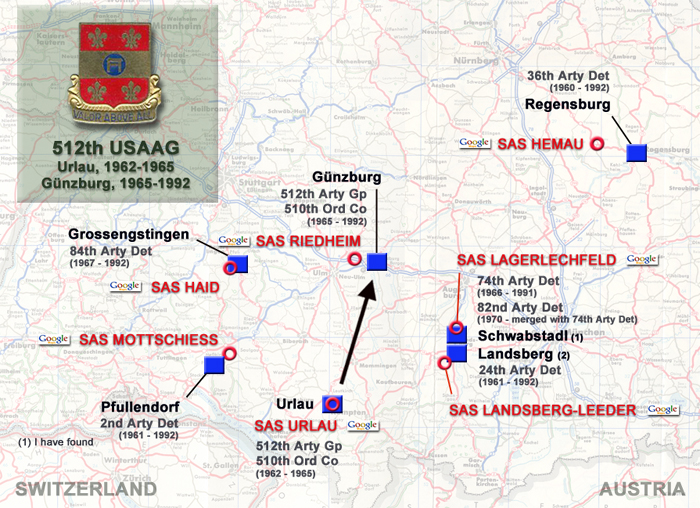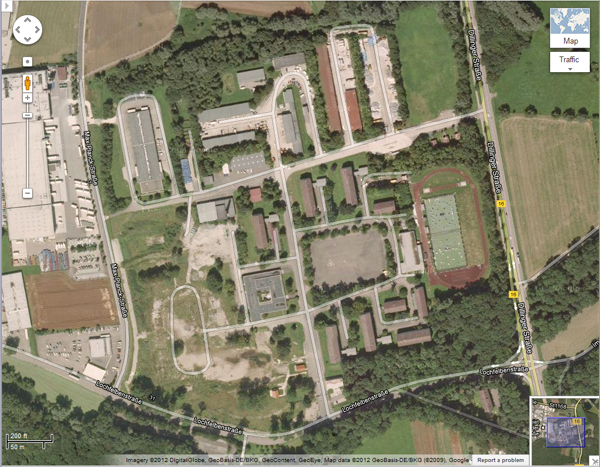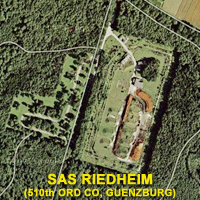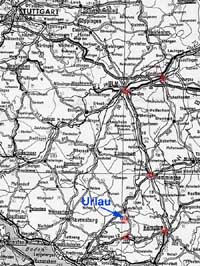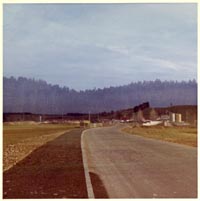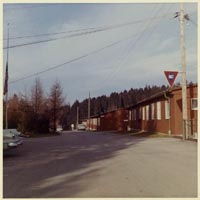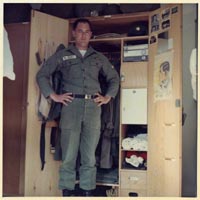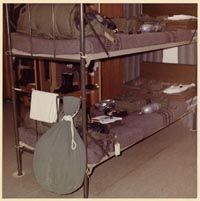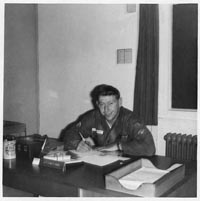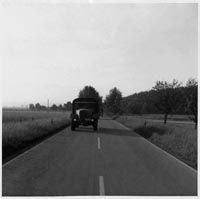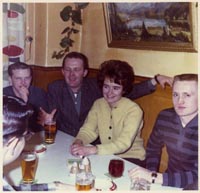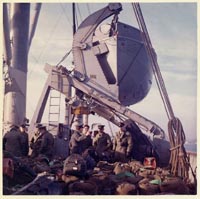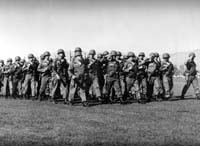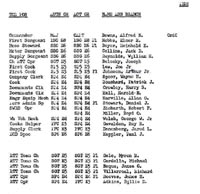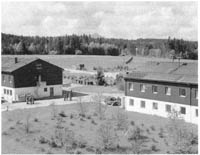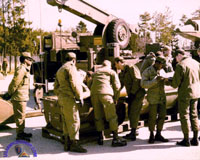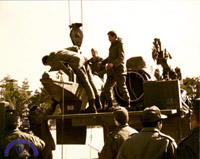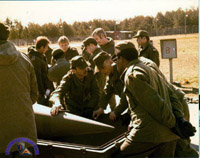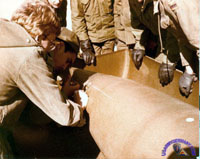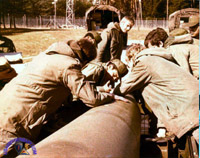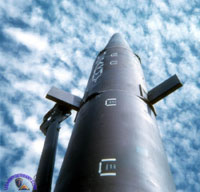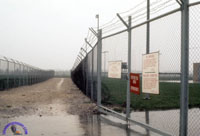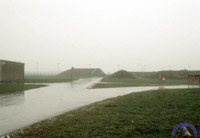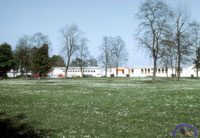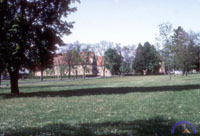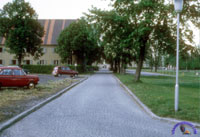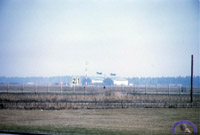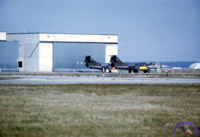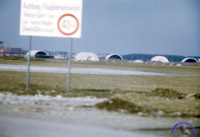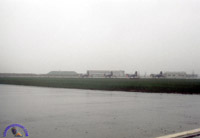| If you do
NOT see the Table of Contents frame to the left of this page, then
Click here to open 'USArmyGermany' frameset |
||||||||||||||||||||||||||||||||||||||||||||||||||||||||
|
512th US Army Artillery Group |
||||||||||||||||||||||||||||||||||||||||||||||||||||||||
|
|
||||||||||||||||||||||||||||||||||||||||||||||||||||||||
|
||||||||||||||||||||||||||||||||||||||||||||||||||||||||
|
||||||||||||||||||||||||||||||||||||||||||||||||||||||||
|
|
||||||||||||||||||||||||||||||||||||||||||||||||||||||||
| History | ||||||||||||||||||||||||||||||||||||||||||||||||||||||||
|
||||||||||||||||||||||||||||||||||||||||||||||||||||||||
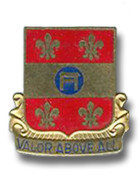 512th US Army Artillery Group DI 512th US Army Artillery Group DI |
||||||||||||||||||||||||||||||||||||||||||||||||||||||||
(Source: A Look Back ... at the 59th Ordnance Brigade. Final issue of the 59th COURIER, the command newspaper, published in 1992.) |
||||||||||||||||||||||||||||||||||||||||||||||||||||||||
| 512th US Army Artillery Group | ||||||||||||||||||||||||||||||||||||||||||||||||||||||||
| The 512th U.S. Army Artillery Group was constituted in the Army of the United States in February 1943 as the 512th Field Artillery Battalion. The 512th was activated at Camp Rucker, Ala. in June 1943. Following training, the battalion went to Europe where it participated in four World War II campaigns. After the cessation of hostilities, the 512th returned to the United States and was inactivated in December 1945 at Camp Kilmer, N.J. In September 1948, the battalion was redesignated as the 463rd Field Artillery Battalion and allotted to the Organized Reserve Corps. Redesignated as the 512th U.S. Army Artillery Battalion in March 1952, the unit was withdrawn from the Army Reserve and allotted to the regular Army in December 1952. The 512th was active in Japan from March 1955 to March 1956. Headquarters and Headquarters Battery, 512th Field Artillery Battalion was redesignated in September 1959 as Headquarters and Headquarters Detachment, 512th U.S. Army Artillery Group. The group was activated in October 1959 at Fort Bliss, Texas and moved to Italy where it was inactivated in November 1961. The 512th U.S. Army Artillery Group was reactivated at Fort Sill, Okla. in March 1962. The 512th arrived in Germany in July 1962 and was assigned to the Special Ammunition Support Command with further assignment to the 548th U.S. Army Artillery Group. In April 1965, the group headquarters and the 510th Ordnance Company relocated from Urlau to Guenzburg. In 1970, the 512th was moved permanently under operational control of the 59th Ordnance Group, which was later redesignated the 59th Ordnance Brigade. The 512th inactivated in June 1992. 2nd U.S. Army Field Artillery Detachment The 2nd U.S. Army Field Artillery Detachment was organized and activated at Fort Sill, Okla. in September 1962 as the 2nd U.S. Army Missile Detachment. In January 1963, the detachment moved to Germany and was assigned to the 512th U.S. Army Artillery Group. The detachment was inactivated in June 1991. 24th U.S. Army Field Artillery Detachment The 24th U.S. Army Field Artillery Detachment was organized and activated in January 1961 as the 24th U.S. Army Missile Detachment at Fort Sill, Okla. Upon arrival in Europe in July 1961, the detachment was assigned to the 548th U.S. Army Artillery Group and then to the 512th U.S. Army Field Artillery Group in July 1962. The detachment was inactivated in May 1992. 36th U.S. Army Field Artillery Detachment The 36th U.S. Army Field Artillery Detachment was organized and activated in October 1959 at Fort Sill, Okla. as the 36th U.S. Army Missile Detachment. Upon completion of training, the 36th Detachment moved to Germany in 1960. The unit was assigned to SASCOM upon its organization. The detachment was further assigned to the 548th U.S. Army Artillery Group and then to the 512th U.S. Army Artillery Group in July 1962. The unit was inactivated in May 1992. 74th U.S. Army Field Artillery Detachment The 74th U.S. Army Field Artillery Detachment was organized and activated in April 1965 at Fort Sill, Okla. as the 74th U.S. Army Missile Detachment. The detachment moved to Germany in June 1966 and was assigned to the 512th U.S. Army Artillery Group in support of the German Air Force's 1st Surface-to-Surface Missile Wing. In January 1971, the two U.S. missile detachments assigned to the 512th, the 74th and 82nd U.S. Army Missile Detachments, were combined. The 82nd was merged with the 74th and redesignated as the 74th U.S. Army Field Artillery Detachment. The 82nd had supported the 1st SSMW from November 1969 until January 1971, and was the first U.S. Army unit to receive a unit to unit streamer from the German Air Force. Since its deployment in 1966 the 74th U.S. Army Field Artillery Detachment had provided continuous support of its strategic NATO mission along with the 1st SSMW. In 1990 the 74th and the 1st SSMW close working relationship was recognized with the USAREUR Partnership award. With its formal inactivation on 15 July, 1991, the 74th completed over 25 years of service in support of the NATO alliance. The 74th was one of only two Pershing IA units in the world. 84th U.S. Army Field Artillery Detachment The 84th U.S. Army Artillery Detachment was organized and activated in December 1966 at Fort Sill, Okla. as the 84th U.S. Army Missile Detachment. The 84th moved to Germany in January 1967 and was assigned to the 512th U.S. Army Artillery Group. The unit was inactivated in May 1992. 510th Ordnance Company The 510th Ordnance Company was constituted in the Army of the United States as Company F, 54th Quartermaster Regiment in May 1936. The company was activated in June 1941 at Fort Dix, N.J. and in June 1942 it moved to Fort Meade, Md. The unit was redesignated as Company F, 54th Ordnance Regiment in August 1942, and in October 1943 it was redesignated as the 872nd Ordnance Heavy Maintenance Company. In April 1943, the 872nd was transferred to Dawson Creek, Canada. Later that year, the company was redesignated as the 872nd Ordnance Heavy Automotive Maintenance Company. The 872nd moved to Fort Ord, Calif. in April 1944 and was alerted for overseas movement. Departing the United States in January 1945, the 872nd arrived in France in January 1946. For its service in the European Theater of Operations, the company received credit for two campaigns. After the war, the 872nd remained in Germany until March 1946 when it returned to the United States for inactivation later that month. In February 1947, the unit was redesignated as the 510th Ordnance Heavy Automotive Maintenance Company. The company was redesignated in April 1959 as the 510th Ordnance Company for assignment to the Armed Forces Weapons Project. The 510th was activated in June 1959 at Sandia Base, N.M. as a special weapons and missile general support company. In August 1962, the 510th arrived in Germany and was assigned to the 512th U.S. Army Artillery Group. The 510th was inactivated May 1992. |
||||||||||||||||||||||||||||||||||||||||||||||||||||||||
| Headquarters/Headquarters Det, 512th USAAG | ||||||||||||||||||||||||||||||||||||||||||||||||||||||||
| (Source: Email from Rick McBee, 512th Arty Gp, 1969-1970) | ||||||||||||||||||||||||||||||||||||||||||||||||||||||||
| Memories of Richard McBee of the 512th Arty Gp in Günzburg, Germany, 1970 Just an update on your 512th in Germany information. The personnel office roster for that year at the Prinz Eugen Kaserne just outside of Gunzburg Germany was made up of CWO Leroy.C. Sweet; SGT Mendez; SP5 Richard McBee; SP4 Alan Lang; SP4 Pete Spera; SP4 Bruce Shoe and SP4 Robinson. I was assigned there when I came through Frankfurt after dropping out of Infantry OCS after the end of the fourth month (OC1 - 70 - Second to None was our slogan but I decided I didn't like the kind of guy I was turning into as a wielded sword man.). In the casual company in Frankfurt I got bored sitting around waiting to be assigned, so I walked into the personnel office and asked if they had any place in the medical corps that I could be assigned since my background was in Biology. They said no, but could I type. I said I knew where to put my fingers on the keys because I had one class in typing in High School, so they called up the Det. in Gunzburg and I got assigned as the new Officer Records Clerk for all the 512th SASCOM Detachments in early Dec. of 1969. When I arrived in Gunzburg, in December, the fellow I was replacing, named Larry, had almost the same history as me and he sold me his old (really old) VW and also talked to the land lady who had his apartment in town with his wife and they agreed to rent the place to me after he rotated out at the end of January. They put me in the barracks with a room mate, Gary Sauers, who had also just arrived. Gary liked to play the song "Nights in White Satin" - almost drove me crazy he played it so much. The barracks were absolutly first class, having been old officer quarters for the Germans in WW2 and had been upgraded. Big rooms we actually had cleaning ladies (putzfraus) who came in and cleaned. Fabulous meals and on Sunday when the cooks didn't work we got to go into the kitchen and make breakfast. That's where I learned how to make omlettes. I stayed in the barracks until Jan. 24th when my wife arrived from her home in England (I having gotten married there in between the end of Infantry AIT and OCS in July). We moved into the Lamb Hotel in Gunzburg for a week until Larry moved out. The first night in the hotel was Fashing, night before Lent starts. The Germans had a giant party all night long and kept us awake, but it was good to be together again after so long apart. In the personnel office I found that my typing was not up to snuff and I needed to go into the office after hours for two hours or so each night for that first month that I was there in order to keep my assignments up to date. By the end of that first January I had the system pretty well down. It's amazing what motivation can do for a fellow. They signed me up for a correspondence course to upgrade my skills so I could be promoted to SP5 which was the roster level for my position. It took me about two months to complete everything and I was then promoted to SP5 and we had a big party out at one of the gasthauses where we passed around the half gallon of whiskey between drinking liters of beer. A lot of crossed eyes and staggers by the time we left. I got a couple of days leave in January before my wife came over and took a quick trip with one of the 510th Det clerks, Shinn, down to Garmisch to go skiing. Fabulous place and a good Gasthaus to stay in as well. Also went to a beer festival in Munich with some of the guys and just about got crushed by the masses of people moving from place to place. After my wife arrived, she met up with the wife of another SP4 - Barry, whose name was Julie. Jill and Julie and also the wife of SP4 Mallette shopped together and kept each other sane while we were off doing our work each day. When they had an alert on the base, for some reason the jeep was supposed to come around through town and collect all of us who were married and haul us into base at whatever time so we could take off for the woods. For some reason they could never find my place, so I would arrive at 8 AM ready to go to work to find that everyone was all suited up in helmets and had the trucks all loaded for the field and had been there since two in the morning. This happened three times while we were there and never once did anyone come wake me up or find me. Fortunately the Russians never decided to press the button. After work every day we had R&R in the base canteen with the slot machines and a few beers. The worst duty was policing cigarette butts, the rest of the time we were in our offices typing like mad trying to keep up with paperwork pre-computer era. On the days when Robie had to put together all the rosters for the Dets. we all spent the entire day walking around one big table piled high with stacks of paper putting together the bundles that had to go out to everywhere in the world to let them know who we were. The most tedious job was completing the Officer Efficiency reports for the Colonel. I couldn't make more than three errors on a page and the paper was non-erasable anyway so it was perfection ...or... I ended up typing a number of things over. In fact the last part of the report had to fit exactly into a special rectangle. The amount of writing could generally only be gotten into the space by laborously back spacing each letter to cram things together. That was when I sweated blood, getting in the last letters if I already had my quota of corrections. Weekends my wife and I saw a fabulous number of castles, hiked in the German woods and met some people who were always helpful and friendly. One day I'll go back and have another look at the area because it was probably as great a place to be stationed as one could wish for. I got an early out in Dec. 1970 to return to graduate school at Montana State. |
||||||||||||||||||||||||||||||||||||||||||||||||||||||||
| 510th Ordnance Company | ||||||||||||||||||||||||||||||||||||||||||||||||||||||||
| (Source: Email from Thomas McGeeney, 510th Ord Co, 1962-64) | ||||||||||||||||||||||||||||||||||||||||||||||||||||||||
| My buddy in the 510th was a personnel clerk and worked at 512th personnel section. He and the rest of the clerks there used to tell me about the personnel actions. Some of tlhem were pretty funny. They had to administer the Missile Detachments. Some supported German artillery units, others the French. During the time when the French Army was being kicked out of Algeria, the 512th ran some paper problems, pretending to issue ammunition. This brought the French soldiers to our depot to similate an ammo issue. This gave us a chance to work with the French. We had a Cajun from Louisiana, and a French Canadian from New York. They handled the translation. The 512th had a couple of German interpreters. I went to the Army language school and took chinese mandarin, but never completed the course. The French officers would tell us how the French Army was being shot up by American War Surplus Sniper Scopes, their nylon, rayon uniforms stood out so sharp detail on the sniperscopes. Oh, one of the funny incidents. One of the Missile Detachments had a 1st Sgt that keep going AWOL, with a German girl. When they got him back, bust him a rank and before they could reassign him he would go AWOL again. This went on for some time. Eventually they had him at Sgt E5 and had to bust him, only they needed a Dept of the Army Order (from the Pentagon) as the 1st Sgt was an NCO in his MOS and below Sgt E5 was only a Specialist rating in E4. So a General Order from the Dept of The Army was gotten to bust him from NCO to Sp4. Funny thing when me and my personnel clerk buddy rotated, there was the former 1st Sgt on our troop ship in brand new fatigues. Sp4 rank an all. About the Missile Detachments, I only came into contact with them by way of my buddy who worked at 512th Personel section. Also, all the two clerks that worked with him used to form our 'drinking group' when we went to Leutkirch, town just north of Urlau. All that Urlau had was a train station and our Bundeswehr Ammo Depot. And maybe a gasthaus. They hauled the sidewalks in at dark. Herlazhofen (?) had a Moor Bad and in the summer it was popular with all the local girls wearing bikinis, which in 1962 just drove us American GI's wild. The Hotel at Herlazhofen had a cellar and the owner made it into a niteclub with the arrival of the two American Army units. It was within walking distance of the Depot, if one was young. I walked it and it took about 45 minutes. I had a VW and used it most of the time. The owner called it "The Kellar Bar", us Americans called it The "Killer Bar". On Saturday nights it had a dance with a 5-piece band. All the Greek and Italian girls, who worked at the local factories would come. Along with all the Greek and Italian boys, who looked on the girls as their private property. Funny thing there were no fights and with the highter intelligence of the sodiers of our units I never witnessed any problems. One incident sticks out. We had a security platoon of 111's infantrymen, who ran 'gatekeeper duty' while a German Army Infantry Company had SASP security. These security people, 3 PFC's, were attending a dance one saturday night and they rented a room at the hotel. Two of them had a girl in the room and wouldn't let the third member in the room. Not to be denied access, the soldier went to the end of the hall and climbed out on the eave to crawl the 6 feet to enter a window into the room. It was winter and there was snow and ice and our soldier probably had too much to drink, anyway he either slipped off, or was pushed off as he tried to get in the room. Knowing the character of the personnel involved and the two in the room didn't want him in anyway, he probably was helped off the eave as he tried to enter the window. It happened as I was due to rotate home. He suffered serious injury, landing on his feet, it broke both ankles and knees I think. He was from Puerto Rico and after he got out of Augsburg Army Hosp, he was sent home to Puerto Rico. They were setting up a Court Martial to find out what happened the week I left. I got the information on his status when I wrote to people in the unit when I was back in the States. When I reported to the Company, the 1st Sgt asked me if I would pick him up at the Leutkirch Station, as I was coming in passed it. It was 6:00 AM and I had a girl in Memmingen that I visited at Night, coming back to the unit in the morning (I had to use a pass and because of this didn't get any 3 day passes). I was sorry to see him have this accident. The missile detachments. I remember there was one at Saar Louis, I believe, or Alsace-Lorraine. Can't remember. We went on a German Army maneuver near Nuremberg. I had to ride in a Gemany Army 10 Ton truck, one of our ammo movers. The 5th Transportation Battalion was our Host Unit. It was headquartered at Kempten. It had a Administrative Co, where our jeeps and sedans and drivers for them came. Then it's 2nd Company was Infantry for our security and the 3rd Company was the truck company for ammo hauling. I think they had 60 of them. Not the small 1 and half Mercedes Unlitum but the big 5 or 10 ton jobs. When we first arrived there was a Kantine at the entrance to the Urlau Ammo Depot, outside the gate. It was a walk to go down to it, but for the lack of anything to do, we would hike on down. There was a lot of Construction going on and all the workers used this Kantine. Later it was moved up to the German part of the base and there was an Open House, The 1st Sgt had me put on Class A's and attend as a representative of the 510th. They had an NCO section and Senior NCO so it was pretty nice. It was about 75 ft. from our orderly room/operations section so for a break we used to go over to the Kantine/Mess for coffee. Also, as a German Army Kantine it served Alcohol all day. Many the mornings I needed a little hair of the dog and there was Bluna (orange soda) and Steinhaeger. It pulled me through. Just remembered that when Overseas pay ended they kept all the SASCOM units drawing it. That $12.00 a month was real nice. I don't remember the exact date, sometime after we were at Urlau. Maybe early 1963. In any event Stars and Stripes carried an article about it and named those US Army units that were still authorized to earn Overseas pay. Yes, you guessed it, there is your list of SASCOM Detachments, etc. We were listed as being stationed at UrLau, Germany and everytime for the next month or so, we would be 'razzed' by the 4th Armored when we went to their PX at Wiley Barracks. It was all good natured. As I remember, they even listed Turkey and Greece as well as Germany. Don't know if they listed the actual unit designation, and I think they did, but I know there was Urlau, Germany. |
||||||||||||||||||||||||||||||||||||||||||||||||||||||||
|
||||||||||||||||||||||||||||||||||||||||||||||||||||||||
| The Beatles were just getting started, but only radio Luxemberg had their music. Radio Luxemberg, all the GI's remember that. The East Germans ran one too, but their English just stunk, music was great, but their trying to be hip just didn't cut it. We were in London when Pres. Kennedy was assassinated, and the Douglas House (US Air Force Hotel for service men) was hosting an All Air Force football championship. All the teams in Europe. Spain, everywhere. When the news broke Saturday, we had heard rumors since noon or around then, as we visited bars. At 6 or 7 in the evening they had an English TV program, I think it was like our Medic, where it is an Operating room. This was being played in the bar we were in. During the program announcements were made about the presidents condition. From when they took him to the hospital and during the surgery. Bad taste on the Bristish, they had a regularly scheduled TV Show that was a doctor bit during surgery. After 15 minutes of the show, with announcements of the president's condition, they had a woman in a formal evening gown playing the harp. Real bad scene, but it was a regular program schedule. One Sunday at Lindau all they had was Stark Bier. 22% alcohol, tasted like wine. We usually drank the 11% draft. You really were floating after we had 1 pitcher for the 5 or 6 of us. Imagine us trying to consume our normal amount and having it twice as strong. Boy were we wasted. What a time, though. One day we had a Russian Army Colonel in a Mercedes with Military Mission Plates and driver. He was in uniform and driver was a German civilian. He was trying to get a room at the gasthaust we used in Leutkirch, and the girl said they didn't have any. We were coming in and he was 3 feet from us talking to the girl. We all called the base per instructions. Our CID Capt told us the next day that the French were chasing that car all over Bavaria. It seems that Urlau was in the southern part of Germany and the French had the southern part. Also, before our company arrived the German radio announced that the US Army 510th Ordnance Company was going to be stationed at Urlau, Germany with Nuclear Weapons. I got this from a German Lawyer I met who lived in Leutkirch. He and his wife took me on several vacations with them. Unfortunately both died several years after I left. I got the news from the lawyers mother who I had met. Two years ago the sister of the lawyers wife visited me here in Long Beach. She married and had a son. The son also visited the previous year. We used to use the German Doctor that did Sick Call in the morning at the Bundeswehr Infantry Comany, but operations were done at US Army Hospital in Augsburg. We did have an automobile accident where the enlisted man went to the Leutkirch Hosp, then back to the Bundeswehr Infantry Company Dispensary. He was an American enlisted man that got drunk and stole an NCO's car after a company party in Leutkirch. Since they wanted the Morning Report to read "The Defendant was kept under Armed Guard", a detail was drawn up where a guard stood over him 24 hrs a day at the Despensary. Since he was in the headquarters platoon, my platoon, we all had a turn at guarding him. He wasn't going anywhere and he wasn't violent, but the Morning Report had to read, "that he was under armed guard". It was storming with thurnder and lightning and our weapon was .45 automatic in a shoulder holster. With the lightning, I got scared and took the shoulder holster off and put it around my hip, didn't want any ammo going off next to my heart. Kind of stupid, but with all those German Army bunkers stored with explosives, and the lightning rods on them, my 25 year old mind was all over the place. About the only problem was when the officer of the day dropped in on a Sunday and observed the prisoner putting the automatic back together because the 'guard' was unfamiliar with the side arm. His weapon, like most of the company, was the M-14. Needless to say the Officer of the Day didn't find any humor at all in it. The OD was an old Cavalry soldier from during WW II and probably got commissioned in the mid 50's. He was the 3rd ranking officer and when our CO was relieved, the executive officer took over and the Cavalry soldier took as Executive Officer. The Executive Officer was the Operations Officer, who I worked for. I tell you about the CO being relieved next time. We in the 510th had also the 8-in shell, and I haven't seen it listed only Honest John and Nike Hercules. Here's a picture of the 'Ole Nickle & Dime' when we passed in review at Sandia Base. It was April of 1962. We were lined up as follows. All the high ranking NCO's were on the right side of the company so their chevrons were viewed by the reviewing stand. All officers were in the front row, plus needed high ranking NCO's to fill out the ranks in the front row. All tall soldiers to the front. Because of my height, I was in the second row, but hidden by SP5 Freeman (2nd soldier in the front row). This is counting from the right file of the company. MSgt Walmsley is the 'Heavy Set' soldier in the middle of the picture, SP5 Freeman is to his right. 2Lt Silvera is to his right saluting and SFC Cashman is to his right. 1Lt Holland is to his right saluting and SFC Pulliam is to his right. The officer saluting is Capt Greenberg. Behind MSgt Walmsley is SSgt Pruitt and behind him is Sgt Horn. We had a parade every week or once a month I can't remember. Maybe once a week as we are missing some senior officers. Major Clute, our CO, was leading with the guidon bearer, SP4 Crowley, who are out of the picture. This ought to bring back some memories if any of the people in the picture happened to be surfing the net and find it. You have a great web wite on all of the units that gave NATO their Nuclear 'PUNCH'. Thank goodness it was never needed. OH, I kept my military shot record card, as it shows me being innoculated for Yellow Fever in December of 1962. Yellow Fever isn't necessary for duty in Germany, but Cuba it is. We were all vacinated for Yellow Fever, as that was the time of Cuban Missile Crisis. Thank Goodness Russia 'Blink". We had just arraived in August/September and about 2 or three weeks later our COMMO section RTT's were all light up with Operation Immediates. None were addressed to us, but somebody was really getting ready to "Kick Ass & Take Names". Morning formations were a little uneasy and the 1Sgt always kept us appraised, then our M14s and Ammo arrived, which was normal for a new unit to Germany, but it didn't help calm us. The Yello Fever was the big jolt. Thank goodness we had a quiet Xmas. |
||||||||||||||||||||||||||||||||||||||||||||||||||||||||
|
||||||||||||||||||||||||||||||||||||||||||||||||||||||||
|
||||||||||||||||||||||||||||||||||||||||||||||||||||||||
| It was a "Power Play". Everybody going into the 510th was guaranteed a stripe. Franklin was a SP5 but he didn't have time in grade. There were several people with time in grade as SP5 but they weren't in this Nuclear Field until they joined the 510th right out of school. Franklin worked this field for some time at Killeen, TX. He came up from there to join the 510th with Capt Downs, SFC Cashman and several others who knew this job and had worked it for several years. He told me over the phone that he enlisted within the 90 day period and returned to Nuclear Weapons. Anyway Franklin's name isn't there. |
||||||||||||||||||||||||||||||||||||||||||||||||||||||||
ORGANIZATION of the 510th Ordnance Company in 1963
|
||||||||||||||||||||||||||||||||||||||||||||||||||||||||
| 2nd US Army Artillery Detachment | ||||||||||||||||||||||||||||||||||||||||||||||||||||||||
| Supported Command: Artillerieregiment 10, Panzerdivision 10 (link) | ||||||||||||||||||||||||||||||||||||||||||||||||||||||||
| The 2nd US Army Missile Detachment supported the 102nd Rocket Arty Bn and the 101st FA Bn. | ||||||||||||||||||||||||||||||||||||||||||||||||||||||||
| 1964 | ||||||||||||||||||||||||||||||||||||||||||||||||||||||||
| (Source: Email from Rick Carrico) | ||||||||||||||||||||||||||||||||||||||||||||||||||||||||
| I went in the Army in Sept. 1963. Basic at Ft. Ord, California and then Microwave operation and repair school in Ft. Monmouth, New Jersey.
I arrived in Mannheim, Germany in the spring of 1964. I went down to Stuttgart for a few days then on to Ulm which was my company HQ. From there I was sent to a little town, Pfullendorf, down by the Bodensee (Lake Constance) where we took over the site from the ATT operators as we waited for the Tropo equipment to arrive. I went back to Mannheim for transistor school and again to learn how to operated the ANGRY 66 Tropo gear. I was transferred at one point over to Landsberg am Lech where I continued to operate the single sideband radios. In both Pfullendorf and Landsberg we were attached to US Army Artillery units that were attached to German Artillery units. We lived on German Army posts in their buildings. The US artillery unit controlled the Honest John rocket war head and the Germans supplied the rocket. We supplied the communications for them. There were usually no more than about 35 to 40 total Americans in the towns. What a deal. I had a wonderful tour and almost reuped. Viet Nam had a great deal to do with that decision. I had talked to too many guys I had been in school with in New Jersey who had been there and I just figured I didn’t need that. I also took a Conversational German language class which lasted 2 weeks and was taught in Ulm. During the class we spoke only German. It was taught mostly by native born Germans who were at the time in the US Army. It was the best thing I ever did. I learned to be fairly conversationally fluent. It made the tour of duty a real dream come true. It didn’t cost anything, I stayed in the Co. HQ building and ate in the mess hall. Life was good. We spent evenings in a little cantina where the owner, a sweet little German lady, would speak only German to us and only up to the level of the class where we were. As a result I dreamed in German for 10 years afterward. Keep in mind we didn’t use a tower at that time. We had poles behind the building with wire antenna from pole to pole. There were three or four antenna wires I believe. Regarding Landsberg, keep in mind, there was a German Air Force unit in Landsbeg plus the German Army. We were on the Army Kaserne. I really think I could pick out our building fairly easy. It was located right what I remember was the north edge of the Kaserne down a little roadway with a German quarters building right next to us on the little roadway. Our antenna field was just to the back of our building between the building and the fence at the edge of the Kaserne. |
||||||||||||||||||||||||||||||||||||||||||||||||||||||||
| (Source: Email from Jack Gibbons) | ||||||||||||||||||||||||||||||||||||||||||||||||||||||||
| Just wanted to let you know that we also supported 4/295 (4th Battery, 295th Armored Artillery Battalion, German Army) which was located in Immendingen. It was a 155SP battery and supported 10th Panzer Division. | ||||||||||||||||||||||||||||||||||||||||||||||||||||||||
| 24th US Army Artillery Detachment | ||||||||||||||||||||||||||||||||||||||||||||||||||||||||
| Supported Command: Artillerieregiment 8, Gebirgsdivision 1 (link) | ||||||||||||||||||||||||||||||||||||||||||||||||||||||||
| The 24th US Army Missile Detachment supported the 82nd Rocket Arty Bn and the 81st FA Bn. | ||||||||||||||||||||||||||||||||||||||||||||||||||||||||
| 1973 | ||||||||||||||||||||||||||||||||||||||||||||||||||||||||
| (Source: Email from Kenneth J. Bowen) | ||||||||||||||||||||||||||||||||||||||||||||||||||||||||
Not only did we provide support to the GE 1st Mountain Div, but we also had warheads designated for 1st Bn, 36th FA at Reese Kaserne in Augsburg, GE. We hardly ever communicated with them, though. |
||||||||||||||||||||||||||||||||||||||||||||||||||||||||
| 36th US Army Artillery Detachment | ||||||||||||||||||||||||||||||||||||||||||||||||||||||||
| Supported Command: Artillerieregiment 4, Panzergreanadierdivision 4 (link) | ||||||||||||||||||||||||||||||||||||||||||||||||||||||||
| (Click here to read Dave Hodgeboom's email on the ADM engineer platoon that supported II GE Corps) | ||||||||||||||||||||||||||||||||||||||||||||||||||||||||
| 1965 | ||||||||||||||||||||||||||||||||||||||||||||||||||||||||
| (Source: Email from Jim Breckenridge) | ||||||||||||||||||||||||||||||||||||||||||||||||||||||||
| 36th USA Missile Detachment, Ingostadt, Germany, 1965-1968. We were billeted at Pioneer Kaserne in Ingolstadt and had our weapons site outside of Hepberg. We supported a German unit in Regensburg but only got down there several times a year for training. |
||||||||||||||||||||||||||||||||||||||||||||||||||||||||
| 1983 | ||||||||||||||||||||||||||||||||||||||||||||||||||||||||
| (Source: Training Times, August 1983) | ||||||||||||||||||||||||||||||||||||||||||||||||||||||||
| Small but highly efficient detachment; Hemau supported by Hohenfels by Ed Caum South of Hohenfels, 20 minutes by car, is a small detachment with a very big mission. Hemau, a German kaserne with an American detachment, falls under the Hohenfels community when it comes to the support of this small, elite detachment. The 36th US Army Artillery Detachment's 56 soldiers provide fire support to the 4th Artillery Regiment and to the 2nd Co., 210th Engineer Battalion of the 2nd German Corps. The detachment's mission is ensuring the custody, security, organizational maintenance and transfer of special weapons for their German counterparts. All community medical, commissary and engineer support is the responsibility of the Hohenfels commander. The breakdown of the detachment is not as exceptional as its mission. First Platoon is made up of artillerymen; Second Platoon consists of engineers; and the Headquarters Platoon includes everyone else: administrative clerks, cooks, etc., according to 1st Sgt. Glen T. McClure. |
||||||||||||||||||||||||||||||||||||||||||||||||||||||||
| 74th US Army Artillery Detachment | ||||||||||||||||||||||||||||||||||||||||||||||||||||||||
| Supported Command: Flugkörpergeschwader 1 (link) | ||||||||||||||||||||||||||||||||||||||||||||||||||||||||
| 1966 | ||||||||||||||||||||||||||||||||||||||||||||||||||||||||
| (Source: Email from Dennis Bryan) | ||||||||||||||||||||||||||||||||||||||||||||||||||||||||
| I saw your web site on the 74th US ARMY MISSILE DETACHMENT. I was one of the original members of the 74th when it was organized in Ft Sill, Oklahoma in 1966. Upon completion of the Pershing Missile School in Fort Sill, Oklahoma. I was called to the Company Commander's office. There I met Captain Cross, who was forming up a Missile Detachment, to be deployed to Germany. Two days later, after a lengthy interview, I was notified that I was accepted into the unit. From the beginning I realized this was going to be a bare bones outfit. We were housed in the top floor of a building belonging to the 44th Artillery. One week later we started our training with equipment we begged, borrowed, or stole from other Units. We were broken up into four Fire teams. Each Team consisted of, one Lieutenant, one Sergeant, and four Sp-4's. After a lenghty training period we were deployed to Germany. Our first look at Germany was from a bus window on the long ride from Frankfut to Lager Lechfeld Air Base. Things at Lechfeld were still pretty basic. You have to remember that is was 1966, and the base still showed signs of WW II. We were a very dedicated unit and a little over a month later we were ready to assume or duties. When we first gained control of our weapons, we had to guard them as well. Our four teams rotated, one week at the fire site, one week on guard duty at the SAS, one week on equipment maintenance. That left one team standing down in Lechfeld. The closest Army unit to us was the 24th Infantry Division in Augsburg. In order to buy anything we needed, we had to rely on the Bunderwehr for transportation. Our unit only had private vehicles, that's why two of us got togeather and bought a car. Due to the fact that at that time we were only getting $164 a month, we could not afford to buy our things on the open market. Although this gave us a way to enjoy the time we had there, skiing in the Alps, touring the cities and towns in Southern Germany and Austria. In January of 1967 we began to lose quite a few of our original members. The majority of the men were draftees and their time was up. I will always be proud of the men I served with in the 74th, and remember the times we shared. SAS Site Our site was quite a bit past Landsberg. I don't remember the name of the place but I can discribe it. It was located in an area were Hitler, during WWII, used as a factory to build jet planes. There was a large hill in the center of the area, which was accually the underground bunker used for assembly. I remember there were railroad tracks leading into very large blast doors on ground level. Our area was maybe a mile past the bunker in an area larger than two football fields. It was surrounded with an outer 12-foot high barbed wire fence, and an inner fence of about 8 feet. In between the fences the Bundeswehr had German Shephard Dogs patrol. We had control of the inner area which contained underground bunkers storing our equipment. We had German soldiers stationed in the Guard House with us. We would spend one week on duty at this site at a time. We controled all access to the inner area, and the Germans controled the outer area. All of the original members of the unit where required to take language classes at Fort Sill, to learn German. This proved to be invaluable to our work with our Flight Wing, and our guard duties. I hope I gave you the information you wanted. It was over 40 years ago and I am getting a bit fuzzy in the brain about the name of the areas we were stationed in. |
||||||||||||||||||||||||||||||||||||||||||||||||||||||||
| 1969 | ||||||||||||||||||||||||||||||||||||||||||||||||||||||||
| (Source: Email from Russell Stanley, 1969) | ||||||||||||||||||||||||||||||||||||||||||||||||||||||||
Just to add a little local color to the history of the 74th USA Arty/Msl Detachment...
I arrived in the unit mid 1969 (my first assignment after FAOBC and Pershing 1A School) and was one of very few officers assigned to the unit. CPT Frank Armstrong (last I heard was a hospital administrator in Denver, CO) was CO, 1LT Jim Hess was XO and MSGT ("Top") Culberson was 1st SGT. Some of the officers who immediately come to mind were 2LT Allen Ryan, 2LT Gregory Pritchett and another 2LT Dave (?) (who lived with Armstrong and Pritchett). Hess also ran the Infantry/security platoon in addition to all the XO ash and trash duties while the rest of us were assigned to one of four firing support teams (supported by an E5 or E6) each assigned to direct support of a Luftwaffe firing battery. I worked closely with Hauptmann Jost Bayert and developed an off duty friendship that included dinners at each others homes, skiing together at Garmish and weekend tours of Munich and the countryside with our wives.
When I first arrived, the LT's had to rotate the Special Ammunition Site (SAS) and Quick Reaction Alert (QRA) site duty among the Officers (excluding Armstrong) which meant we had 24 hour duty every third day. It was pretty tedious especially when we knew that the people (and generally all the wives) who weren't on duty were at an ongoing party that rotated among the homes of the Officers not pulling duty. We were later joined in 1969 2LT John White, 2LT Dick Jolliffe and 2LT Vic McGuire. They added welcome depth to the duty roster and freed some of the original officers to focus on "staff" type duties, such as a full time S2, that needed some attention. Armstrong left and was replaced by CPT Meredith (who was the exact opposite of Armstrong). 2LT Jim Ashby (last I heard was a banker in Greensboro, NC), an Infantry Officer, later arrived and took over the Infantry Platoon from Hess. Hess left and I took over as XO in early 1970 and became a constant challenge to 1SGT ("Chuck") Culberson. His sage counsel, candor, patience and interest in my performance as XO has forever indebted me to him (and all the other professional NCO's we were so lucky to have during my assignment at the 74th) and, I'm sure, made things much easier for all those with whom I worked.
During this time, we had two Pershings counted down and "ready to fly" at the site located just outside the perimeter of Schwabstadl and a number of weapons at the SAS ready for field deployment. Our focus was, first and foremost, security and control of the weapons at the QRA site and the SAS site, and then, training for the frequent special ammunition handling (for example, destroying the weapons at the SAS, transporting the weapons and transferring weapons from one missile to another as necessary) proficiency reviews by our parent organizations. The remainder of our time was spent on individual military training (for example, we upgraded from the M-14 rifle to the M-16 rifle during that time and had to qualify everyone in the unit on the new weapon before that person pull a duty tour) which was a challenge since some part of the Enlisted, NCO and Officer force was always unavailable for training.
The advance party for the 82nd (Arty Det) arrived in early to mid-1970 and we spent a good deal of our time working out the details of joint custody and how we would share the joint responsibility for security at the SAS. MAJ Mandeville (by the way, he was from Chickasha, OK) was CO of the 82nd, 1LT Bob Manatt was XO (he later was plant foreman at the creosote plant in DeQueen, AR). We were jealous when the rest of the unit arrived with a full TO&E of Officers, NCO's and Enlisted men (we were still struggling to get up to full strength) but we were happy to see them since, once they qualified to pull duty, they relieved us of half the requirements for a SAS Duty Officer. Off the top of my head, some of the other Officers were 2LT Maas, 2LT Mockenhaupt and CW4 Cullenbine (who last I heard was a ski instructor/bum in Red River(?), NM) just to name a few. Chief Cullenbine was assigned (thank you, MAJ Mandeville) to technical support of both units since the 74th had not had, until that point, an embedded technical support Warrant Officer. Chief Cullenbine was probably one of the most welcome additions from the 82nd.
Because of our location, the nature and size of our unit, our assignment and our close living conditions among all ranks, we had been generally isolated from most of the disruptive influences prevalent through out the military in the early 70's. The arrival of the 82nd brought a whole new dimension to life at the 74th. We suddenly had an Field Grade Officer in our midst, we had to coordinate support and custodial responsibilities and there was a little natural competition between the units. We also had a larger number of troops running around during the off duty hours in the small towns in which we were stationed. During WWII, that area of Germany had been bombed extensively and was a vital part of the Nazi war machine with production facilities, concentration camps and last resort strategic defensive positions. Most Germans knew we were there supporting the Luftwaffe but since most of us lived in the small towns "on the local economy" we (and our wives) just had to get used to some of the strange looks we got when we frequented local bars, restaurants, clubs and shops.
MAJ Mandeville was great to work with but the (merger of the units) hand writing was on the wall and he, naturally, was interested in what was happening at the 74th after the 82nd got settled into their assigned area. It made things a little dicey every once in while since we were beginning to have some on, and off, duty discipline problems and recreational drug use was becoming a real issue. That was a particularly sensitive issue because of the nature of our assignment.
I left for RVN (2nd Bn, 11th FA, 101st Airborne ("On Time, Sir")) and missed the actual merger of the two units. I kept in touch with some people for a while but we've all eventually gone different ways. All-in-all, it was great 18 months in Germany and I would have loved to go back for another tour. It was a great time to be there with a great group of Officers, NCO's and Enlisted men (everyone of them - even though most were draftees and only making the best of the situation). We all should have enjoyed it more... |
||||||||||||||||||||||||||||||||||||||||||||||||||||||||
| 1971 | ||||||||||||||||||||||||||||||||||||||||||||||||||||||||
| (Source: Email from Lou Scheiderich, 1971-73) | ||||||||||||||||||||||||||||||||||||||||||||||||||||||||
| I was stationed at Schwabstadl with the 74th Artillery Detachment from Feb 1971 to Aug 1973. What a great assignment. I lived in Klosterlechfeld just down the road on the third floor of the Gasthaus Bayerische Löwe with my new bride. It was like a 2 1/2 year honeymoon, no interference from in-laws, not much money either, but the whole of Europe to explore. The way we pulled duty in those days, between the 2 Q sites (Webmaster: Schwabstadl and Landsberg-Süd?) and the SAS in Lagerlechfeld it was very conducive to 3 day passes. We took every advantage to get out and explore the countryside. I developed a deep love for the country of my forefathers during those years and have been back dozens of times including two assignments as a government civilian in Stuttgart. We maintain a very close relationship to this day with the family who put us up in Klosterlechfeld during our time at Schwabstadl. |
||||||||||||||||||||||||||||||||||||||||||||||||||||||||
| 1977 | ||||||||||||||||||||||||||||||||||||||||||||||||||||||||
| (Source: Email from Bill Selosky, "B" Team, 74th USAFAD, 1977) | ||||||||||||||||||||||||||||||||||||||||||||||||||||||||
| When we had our down time after our duty at the Q our building went from one extreme to another. Initially everyone would head out to the Augsburg PX for cigarettes, and or adult beverages, their German girlfriends home, or headed to the Bahnhof to head down to Munich where the discos, the district, and -- when in season -- the Octoberfest woukd keep you busy. During these periods, the building would be extremely quiet. As everyone would return, the building became extreme. You would hear everything from Zeplin to Bootsy at volumes the discos would envy. Most of the guys would have their smaller groups they would hang out in designated rooms. Occasionaly the entire place went wild and the room doors would open and the real parties would begin. ADDITIONAL INFORMATION: I arrived at "B" Team 74th USAFAD, Schwabstadl Kaserne in the fall of 1977. I remember the fall being so beautiful and winter turning into a gray color, as if life became a black and white photograph. Upon my arrival, my team was on their 30-day compound duty at the Kaserne in Schwabstadl. There was still down time, but our unit worked normal hours during this 30 day period and had free weekends with the exception of duty over at the headquarters building when scheduled as such.
After our 30-day compound duty we would pack up, load onto a German driven bus with our weapons and proceeded to the Q. The ride always seemed so long, and I felt as if we were purposely driven in circles before our arrival at the pad. Upon arrival at the Q, the other team would be packed up and begin to load as soon as we exited the bus. We would check our weapons into the weapons room unless assigned to relieve the team on a pad. Signal, cooks, and Officers would make a flawless shift of command without ever missing a beat, or attention to the security at hand.
Our stay at the Q was just another cycle that was 8 hours on, and 8 hours off, 3 pads, 3 P1A's per pad, two Americans, and two Germans per pad. In this joint effort -- we were the custodians of the warheads, while the Germans were the owners of all the hardware. This is also the reason the Germans drove us everywhere, even for medical attention.
Periodic permeter inspections of the woodline around the Q would usally produce empty Russian K ration cans. It was as if they wanted us to know that they knew we were there, and we did. We were also alerted ocassionally to look in the sky and we would see satellites traveling across the heavens. There was talk that they were Russian satellites and that they could read our names in the dark that were sewn onto our OD green wardrobe. I never really bought into that, but who really knows...
|
||||||||||||||||||||||||||||||||||||||||||||||||||||||||
| (Source: Email from John Maxham) | ||||||||||||||||||||||||||||||||||||||||||||||||||||||||
| I was stationed in Schwabstadl Germany with the 74th USAFAD during the years of 1977-79. We had four teams A-B-C-D and HQ. I was assigned to "B" Team for 1 year, "A" Team for 1 year and Hq for 8 months. We had Pershing missiles that were in a town called Ochsenhof which was near a town called Kempten up in the mountains in Bavaria. We would go there every 6 weeks to change team member. Schwabstadl is near a town called Schwabmunchen. Lagerlechfeld Base was across the street. What a great time I had. I was a spec- 4 and was in charge of a squad. Many many stories. I will be going back in 3 weeks. I met my wife (German) while station in Schwabstadl. Her family has a farm over there. John Maxham |
||||||||||||||||||||||||||||||||||||||||||||||||||||||||
| (Source: Email from John W. Shank II) | ||||||||||||||||||||||||||||||||||||||||||||||||||||||||
| I was stationed in Germany for three different tours. As I looked your various web pages, a thought comes to mind. There were three field artillery battalions and two US artillery detachments over 100 mile from the border waiting to excute their mission. These units: 1/41 FA, 1/81 FA, and 3/84 FA along with the 74th USAFAD and 85th USAFAD on QRA status with your Pershing1a and Pershing II missile. The 74th and the 85th were supported by the German 1st and 2nd Surface-to-Surface Missile wings. I am sure that a lot of veterans from 1962-89 were not aware of the massive firepower backing them up. The men and women who manned the Pershing missile are proud to have been your "ace in the hole." I thank God we never had to release that monster. In 1989, the hard, and long hour paided off when that wall came crashing down. Ladies and gentlemen, JOB WELL DONE! First of all, there was only one warhead detachment (74th USAFAD, 512th US Army Artillery Group in Gunzburg) -- our counterpart was the German 1st Surface-to-Surface Missile Wing out of Landsberg. As for Landberg Süd, the older guys said it was and old Nike site, but we used it for training. Our garrison was located in Schwabstadl ( |
||||||||||||||||||||||||||||||||||||||||||||||||||||||||
|
||||||||||||||||||||||||||||||||||||||||||||||||||||||||
|
||||||||||||||||||||||||||||||||||||||||||||||||||||||||
| 82nd US Army Missile Detachment | ||||||||||||||||||||||||||||||||||||||||||||||||||||||||
| Supported Command: Flugkörpergeschwader 1 (link) | ||||||||||||||||||||||||||||||||||||||||||||||||||||||||
| 1971 | ||||||||||||||||||||||||||||||||||||||||||||||||||||||||
| (Source: Email from Charles Harden) | ||||||||||||||||||||||||||||||||||||||||||||||||||||||||
| After training at Ft. Sill, OK as a 15E10, Pershing Missile Crewman (Pershing 1a), I was assigned to the 82nd USA Artillery Detachment (Lechfeld) and arrived there in March, 1971. At that time both the 82nd and the 74th USA Arty Dets were in a training mode for receipt of the first Pershing 1a equipment to be given to the FKG 1 of the German Air Force. Our other mission at that time was warhead security at the Special Ammunition Storage site (SAS) on the Lechfeld Air Base. Training included use of the “Permissive Action Link” (PAL) mechanism to enable the warhead, mating the warhead to the missile, security operations at the SAS, and use of shaped charges to destroy the warheads should there be a chance of them falling into unauthorized (German or Warsaw Pact nation) hands. We shared the guard duty at SAS with the guys from the 74th, but after consolidation of the 2 units in the spring or summer of 1971 the teams were rearranged to make best use of available personnel, and I was sent over to Schwabstadl (at the south end of Lechfeld airbase) to join a team at what had been the 74th USA Arty Det. The CO at the 82nd was Major Craig Mandeville out of some little town in Oklahoma, and the 74th was commanded by CPT Thomas Morse, affectionately known as “Mad Dog.” Upon consolidation of the units, MAJ Mandeville became CO of the 74th and “Mad Dog” became XO. MAJ Laurence Mooring followed as the next CO probably in 1972, and in about 1973 he was replaced by MAJ John Kearns. First Sergeants Charles Culberson and subsequently Echevarria ran the Orderly Room through 1974 when I left the unit. After consolidation, the 74th had a TO&E strength of about 230 men. It was generally a “cushy” assignment but with a lot of boredom after our teams were repositioned at the Quick Reaction Alert (QRA) site south of Landsberg, and stood guarding the missiles. I quickly saw the futility of a 2 year stint on guard duty and offered my services to 1SG Culberson as a typist. When I left the unit in 1974, I had qualified as a personnel specialist as was the unit administrative NCO. All things considered, it was a great way to do military time, and in retrospect it is apparent that the Pershing Missile had a great deal to do with “winning” the cold war. I’m glad to have been a part of it. Charles Harden |
||||||||||||||||||||||||||||||||||||||||||||||||||||||||
| (Source: Email from Bill Newton) | ||||||||||||||||||||||||||||||||||||||||||||||||||||||||
| I was with the 82nd Missle Det (Pershing 1A warhead support) with SASCOM in the early 70's. We were located at Lager Lechfeld (Lechfeld Air Base - |
||||||||||||||||||||||||||||||||||||||||||||||||||||||||
|
||||||||||||||||||||||||||||||||||||||||||||||||||||||||
| 84th US Army Artillery Detachment | ||||||||||||||||||||||||||||||||||||||||||||||||||||||||
| Supported Command: Artillerierkommando 2 (link) | ||||||||||||||||||||||||||||||||||||||||||||||||||||||||
| The 84th US Army Missile Detachment supported the 250th Rocket Arty Bn and the 210th FA Bn. | ||||||||||||||||||||||||||||||||||||||||||||||||||||||||
| 1982 | ||||||||||||||||||||||||||||||||||||||||||||||||||||||||
| (Source: Email from William L. Sanders, II) | ||||||||||||||||||||||||||||||||||||||||||||||||||||||||
| In April 1982, I arrived at the 84th USAFAD located near Gross Engstingen in a German Army VW van wearing my class “A”s after just completing FAOBC. The Detachment or “Det” of roughly 65 US Army personnel was a mix of mostly FA personnel, some Signal and a command element of a couple of Cooks and Admin. personnel. As usual, top heavy in Company grade Officers (all FA) and its 1SG was a tough SFC from Louisiana. The Eberhardt Finck Kaserne was located not far from” Gross”, but was several hours drive to our HQ and Army Community and support in Gunzburg. We directly supported a German Lance BN and Transport BN. These provided all transportation for the US Det. Our very small billet was typical 1950’s NATO. Single story “H” shaped building stuck in back of the Kaserne. This small building held everything from office space to enlisted quarters and day room which had movies and MTV tapes on an l st generation wide screen. One wall had wallpapered to it a tropical beach scene. Officers and Senior NCOs were housed on a hill outside of” Gross”, with their families in well maintained comfortable quarters or in apartments on the Economy. Our Detachment was organized into one HQ element with our CO: CPT Plumley and three M&A teams supporting one German Battery and one Security team. My team was “Charlie Team” and really run by SSG Scoogins who got us great Evaluations every inspection. , I was also the Detachment’s XO. The few signal personnel stayed locked in their security room or were maintaining the equipment, I do n’t remember much about them. Our “Locked Room” was across the hall (I can still remember that” buzz” sound of that phone). Our QRA was not far away, but as I recall, situated next to a forest with a “wanderweg” too close to the outer fences: I remember civilians staring at the fencing and “mounds” beyond. Our time was spent doing the typical paperwork and preparing for the inspection cycle that occurred every year. We did have most weekends off, if our team was not on duty, and I remember many great times with our German counterparts and also the occasional “Officers’ Call” in Gunzburg. The single NCOs and Enlist had their haunts: One was a small Gast Haus outside the front gate and rumored to be run by East German spies, and new personnel quickly fit in (you had to, or the 1 year tour would feel like 100 years). We had the occasion Green Peace protest but we were ordered to stay away from them (Officially, we were not there). If we were asked what we did, we would say that we maintained some “US Army equipment” only. Our food was great for Army food. The SSG in charge and the military cooks did a great job. The few dependents we had were always welcome at the det (after duty hours). I am sure that they were as glad to be in Germany as were the rest of us. At that time, the exchange rate was 3 Marks to the Dollar (PV1s made a lot of money compared to the average German). The worst part of the tour was the several hours drive through the mountain roads of southern Germany to get to the PX for a real hamburger or shop for some of the great buys available ( including a BMW dealership: this is where I got my 318i) and to be around hundreds of other Americans (We did get home sick). Even the infrequent field exercises were not comfortable: The entire unit would pull into a village: All the vehicles would be placed in closed barns (that was our Camouflage) and the Command Center was in a Gast Haus! Over all, I would say that this was a great assignment. A great introduction to the Army as a new Officer, but I believe everyone liked the duty, especially during President Reagan’s Military buildup that lead to the fall of the Berlin wall. Most of the buildings are gone now, the Kaserne became an industrial site, but the QRA appears intact ( minus the fencing). The people I remember most are: 1LTs Johnnie Wright, Tom Talty, and Mike McCready, SSG Scoogins and my team of great guys who never let me down: SPCs Hamilton,Ochoa, Medlin. The cooks were SPC Silas and Maynard (he married a local girl and got a job working in a German bakery, after he ETS’ed). The company clerk was SPC Jerome, and the supply SGT was SGT Bell. The others, I can see their faces but can not remember their names (my loss). |
||||||||||||||||||||||||||||||||||||||||||||||||||||||||
|
|
||||||||||||||||||||||||||||||||||||||||||||||||||||||||
|
Related Links: |
||||||||||||||||||||||||||||||||||||||||||||||||||||||||
